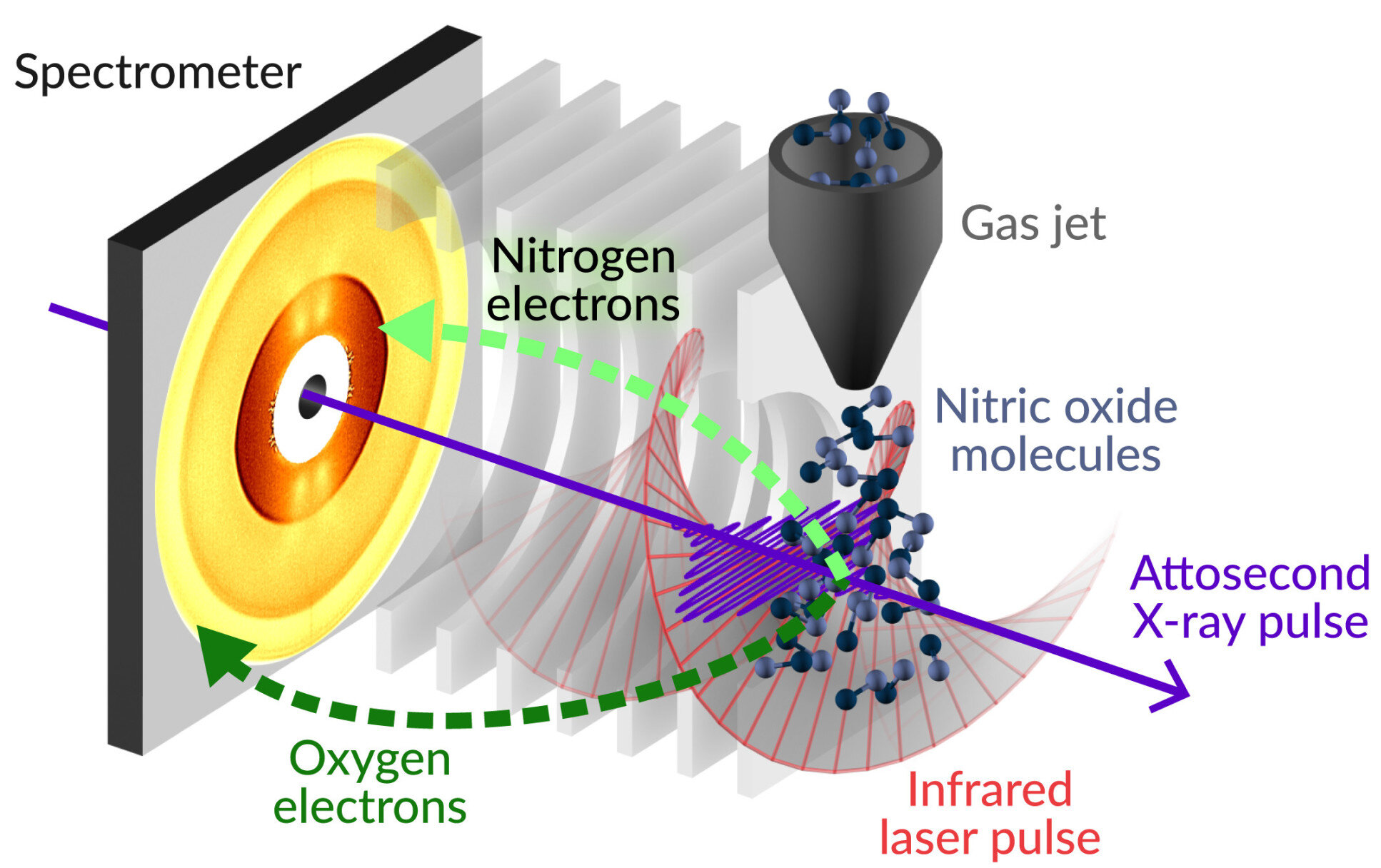
Credit: Greg Stewart/SLAC.
A study of electron dynamics timed to millionths of a billionth of a second shows the damage radiation can do.
The first-of-its-kind study used ultrafast X-ray laserpulses to disrupt the electrons in a molecule of nitrous oxide and measure the changes with unprecedented accuracy.
The work was performed at the Linac Coherent Light Source (LCLS) in the US and supported by a team of five scientists from Imperial College London.
Conventional X-rays can cause damage to cells, but how it is done is not known. New high-intensity and short-pulse-duration X-ray lasers are being proposed to image smaller molecules with greater precision, leading to questions about potential damage to living tissue.
For the first time, researchers have been able to measure the behavior of electrons in a molecule as it responded to irradiation by ultrafast X-rays.
Understanding to new limits.
Professor Jon Marangos, from the Department of Physics at Imperial, said that being able to reach a few hundred attosecond precision when timing electron dynamics means we can now begin to understand certain phenomena to new limits.
Radiation damage to biomolecules has been too fast for us to understand. We might be able to mitigate unwanted radiation damage with this new understanding.
The researchers fired an X-ray pulse and a laser pulse at a molecule of nitrous oxide, the first to knock an electron out of its place, and the second to time the change. Researchers used conventional X-rays to observe electron emission in a process known as Auger-Meitner decay.
They were able to observe a new phenomenon with the faster X-ray lasers. Because of quantum effects, electrons can be in several quantum states at the same time.
A superposition of different electron quantum states is created by the very short X-ray pulse. The 'quantum beat' is a pattern created by the coherence when the AM decay is observed.
Dr. Vitali Averbukh, from the Department of Physics at Imperial, said: "Tackling individual coherent quantum effects stemming from this irradiation is necessary for building a new physical picture of radiation damage by intense ultrafast X-rays." The current work is one of the first steps in this direction, which is a completely different type of dynamics that translate into irreversible chemical change.
Initial results obtained by quantum chemists at Imperial suggest that quantum coherence can steer chemical change.
Attoclock measures.
The timing of the AM decay and the quantum beat was accomplished using an 'attoclock' which uses a circularly polarized optical laser pulse as the X-ray pulse. The electron is tagged by its emission time when the laser field direction rotates very fast.
The time in the laser field's rotation that the electron appeared was recorded on a momentum sensitive detector. The team was able to time the electron dynamics based on where the signals appeared.
The ultrafast lasers and attoclock setup used by the team will pave the way for studies that observe fast electron motion in more complex molecules over sub-nanometer (one-billionth of a meter) spatial scales.
Science has more information about Siqi Li et al, Attosecond coherent electron motion in Auger-Meitner decay. There is a science.abj2096.
Science journal information.
The fastest-ever study of how electrons respond to X-rays was performed on January 21.
The document is copyrighted. Any fair dealing for the purpose of private study or research cannot be reproduced without written permission. The information provided is for educational purposes.